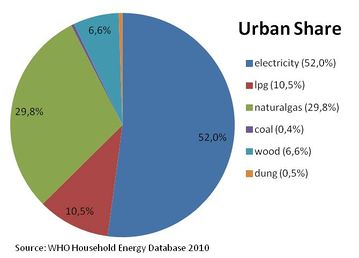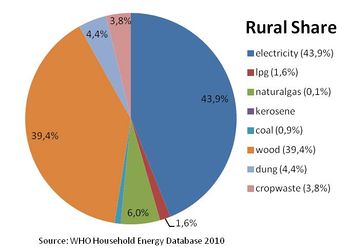Knowledge fuels change - Support energypedia!
For over 10 years, energypedia has been connecting energy experts around the world — helping them share knowledge, learn from each other, and accelerate the global energy transition.
Today, we ask for your support to keep this platform free and accessible to all.
Even a small contribution makes a big difference! If just 10–20% of our 60,000+ monthly visitors donated the equivalent of a cup of coffee — €5 — Energypedia would be fully funded for a whole year.
Is the knowledge you’ve gained through Energypedia this year worth €5 or more?
Your donation keeps the platform running, helps us create new knowledge products, and contributes directly to achieving SDG 7.
Thank you for your support, your donation, big or small, truly matters!
Tajikistan Energy Situation
| Tajikistan | |||
|---|---|---|---|
| Capital | Dushanbe (38° 33′ 0″ N, 68° 48′ 0″ E) | ||
| Official Languages(s) | Persian (Tajik) | ||
| Government | Unitary semi-presidential republic | ||
| President | Emomalii Rahmon | ||
| Prime Minister | Oqil Oqilov | ||
| Total Area | 143,100 km2 | ||
| Population | 7.6 million | ||
| Rural Population | 5.6 million (74%) | ||
| Urban Population | 2 million (26%) | ||
| GDP (Nominal) | US $ (year) | ||
| Literacy Rate | 99.5% | ||
| GDP (current $US) | 5.6 billion | ||
| GDP Per Capita | 820 | ||
| Currency | Somoni (TJS) | ||
| Time Zone | TJT (UTC+5) | ||
| Electricity Generation | TWh/year (year) | ||
| Calling Code | +992 | ||
| Access to Electricity | % | ||
| Wind energy (installed capacity) | MW (year) | ||
| Solar Energy (installed capacity) | MW (year) | ||
Overview
Tajikistan is Central Asia's smallest country. It is landlocked and lies in an active seismic zone with frequent earthquakes. Mountains and territory over 3000m high covers 93% of its area, with the the Pamir and Alay Mountains dominating the landscape.[1]Tajikistan's climate is continental with seasonal variations. It has hot summers and mild winters and a semiarid to polar climate in Pamir Mountains. The average low and high temperatures are 8.1°C and 22.0 °C, respectively. [1]2.9% of the land in Tajikistan is covered by forest. The forest annual rate of change (between 2005-2010) was 0% [2]
Tajikistan has a population of 7.6 million, the majority of which (74%), lives in rural areas. The population density is 48 Persons per km² . Tajikistan is the poorest country in Central Asia and its economy remains fragile due to corruption, weak governance, unemployment, and seasonal power shortages. More than 40% of the populations lives under the poverty line of 2 USD/day. Yet recent years have seen an annual economic growth rate of 8-10%. The GDP in 2010 was $US 5.6 billion and GDP per capita was $US 820. Its economy is based on the production of hydro power, cotton, and aluminum and national income sources consist primarily of agriculture (49.8%), services (37.4%), and industry (12.8%). [1]
Energy Situation
After the end of the Soviet Union, electricity subsidies were terminated and the following energy demand gap was predominantly filled by local biomass resources, such as coal and wood, resulting in increased deforestation and pollution. In certain areas, the average electricity available amounts to less than 4 hours daily during winter.
Tajikistan has enormous hydro power potential as it possesses 4% of the world's hydro power resources and 53% of Central Asia's resources. Yet these resources remain to be sufficiently developed. About 94% of electricity generating capacity is hydroelectric, but only an estimated 5% of its potential is in use. The country faces an energy deficit of 3.0 to 3.5 GWh, resulting in regular blackouts from October to April. Primary energy shares in 2008 consisted of the following: 21.6% oil, 18.3% gas, 56.4% hydro, and coal 3.7%.
The electrification rate is 85.4 [3]. Hydro-electricelectricity generates around 17,00GWh per year. Prices vary but people typically pay 1.5 US cents/kWh. The TajikAluminum Company (TALCO), is the largest consumer in Tajikistan and uses about 50% of total electricity consumption.
Many components of the transmission and distribution system are in bad condition and need to be replaced. Network and commerical losses result in up to 17'% losses. Rural populations experience more difficulties in accessing electric power due to bad conditions of the system, instability of voltage, and high losses.
Potential for Renewable Energies:
Since electricity prices are very low due to low prime costs for the large hydro plants, alternative ways to generate electricity have been limited. However, Tajikistan's rivers have great hydropower potential and thus the government has focused on attracting investments for projects for internal use and electricity exports. [4] Furthermore, hydro-power is the only RE source for electricity production on national level, whose input is documented. [5] In addition, recent surveys (see Tajikistan household survey 2012) have confirmed a large interest, especially among the rural population to install solar power in order to decrease energy dependence and some micro-finance institutions have already begun to develop credit lines in order to enable the purchase of solar systems.
The estimated solar potential is about 25 billion kWh/year in Tajikistan. There are about 2,100 to 3,000 hours of solar energy per year. While this potential has not yet been exploited, Tajikistan does utilize some solar resources for water heating purposes.[6]
Household Energy Situation
Share of energy types on cooking energy in urban and rural areas of Tajikistan.[7]
Percentage of population using solid fuels (charcoal, coal, cropwaste, dung and wood) as cooking energy.
National: 21.5%, urban:<5%, rural: 34.5% [7]</span>
The share of solid fuels in Tajikistan is in no way homogenous, as we find wood to be the primary fuel biomass in the Pamirs region and coal imported from Usbekistan to be the primary source in the Northern part of the country (Sughd region).
The average electricity available in rural areas of Northern Tajikistan (Sughd Region) amounts to less than 4 hours daily during the 5 months of winter. An average rural/farming household (7 persons) will use approximately 4 tons of coal during these 5 months, while heating a single room only, representing a major financial constraint for many families.
Solid Fuel Use Impact on Health
Total annual deaths attributable to solid fuel use: 1600 persons
Percentage of national burden of diseases attributable to solid fuel use: 3.5%[8]
Policy Framework, Laws and Regulations
Market Risks
Relevant Institutions and Organisations
Existing Projects
Further Information
References
- ↑ 1.0 1.1 1.2 CIA - The World Factbook
- ↑ FAO (2011): The State of the World's Forest
- ↑ http://www.ngdc.noaa.gov/dmsp/pubs/Elvidge_WINTD_20091022.pdf
- ↑ INOGATE Energy Portal
- ↑ http://www.iea.org/stats/renewdata.asp?COUNTRY_CODE=KG
- ↑ INOGATE Energy Portal
- ↑ 7.0 7.1 WHO 2010: WHO Household Energy Database
- ↑ WHO (2006): Fuel for Life - Household Energy and Health





















